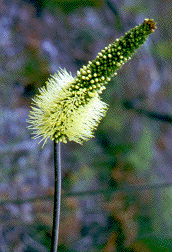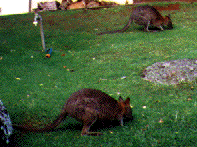
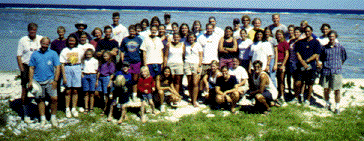 The students, staff, and staff families at
Lady Elliot Island, December 1996.
The students, staff, and staff families at
Lady Elliot Island, December 1996.
The focus of the academic program for the Queensland, Australia Science Term Abroad was the marine and terrestrial ecology of Australia. The program integrated its field and lecture components. Courses on statistics and data analysis were included to provide the necessary background for students to do field-based projects that include a substantial quantitative component. Additionally, a course on the society and cultural history of Australia helped put contemporary social issues in Australia in perspective.
The University of Queensland location provided for easy access to an extremely wide array of different ecosystems. The program included major trips to four field sites: a sand island, a subtropical rainforest, a coral reef, and an arid bush habitat.
The program ran during Hobart and William Smith Colleges Fall Academic term: form mid September to early December, 1996.
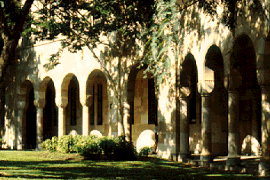 The program was based at the
University of Queensland
(Australia's largest university) in Brisbane.
Queensland
is a state on the east coast of
Australia
and Brisbane is its capital city. With a current population of about 1.25
million, Brisbane is Australia's third largest city, but has a "small town"
feel. It holds many attractions for visitors, including its abundant sunshine
and tropical climate.
The program was based at the
University of Queensland
(Australia's largest university) in Brisbane.
Queensland
is a state on the east coast of
Australia
and Brisbane is its capital city. With a current population of about 1.25
million, Brisbane is Australia's third largest city, but has a "small town"
feel. It holds many attractions for visitors, including its abundant sunshine
and tropical climate.
The Great Court at the University of Queensland.
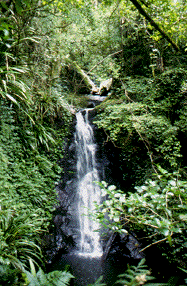 A major feature of the program were the field trips of five to seven days to each of
these four locations:
A major feature of the program were the field trips of five to seven days to each of
these four locations:
Waterfall at Lamington National Park.
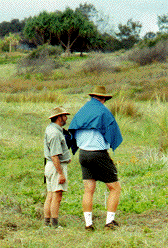 A. The Biology of Australian Plants and Animals (Biology 231)
A. The Biology of Australian Plants and Animals (Biology 231)This course was organized by David Yates (Botany Dept, U of Q) and Ian Tibbetts (School of Marine Science, U of Q) in conjunction with the staff of the University of Queensland. Lectures were given by several University of Queensland faculty from the Science Division. It served, in part,as preparation for the field trips.
B. Statistics and Data Analysis (Biology 212, Biology 312)
Courses were offered by Professors Glover and Mitchell at two levels: an advanced section for students who had taken Biology 212 (Biostatistics) or Math 251 (Applied Statistics) and an introductory section for students with little or no statistics background.
David Yates (left) and Tom Glover at 18-mile Swamp, North Stradbroke Island.
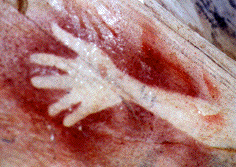 C. Australian Culture, Society, and Contemporary Issues (BD 231)
C. Australian Culture, Society, and Contemporary Issues (BD 231)
The course organized by Dr Richard Nile, head of the Australian Studies Program at UQ, featured lectures and films on topics from the views of the Aboriginal peoples of Australia, to the European imaginings and colonization of the continent, the mythology of the Australian battler and the role of Gallipoli in the country's identity, up through issues of modern multicultural Australia.
Red ochre stencil at Carnarvon Gorge.
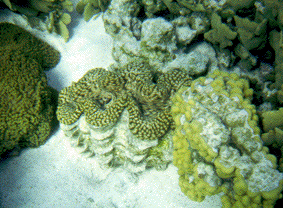
Different species of coral and clams compete for light and
nutrients in the protected inner reef flat at Lady Elliot Island,
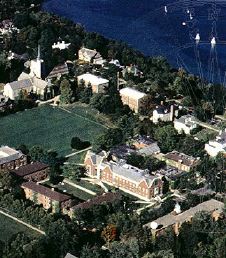
Dr. Gary Johnston (johnston@hws.edu)
Director, Off-Campus Studies
Hobart and William Smith Colleges
Geneva, New York 14456
USA
